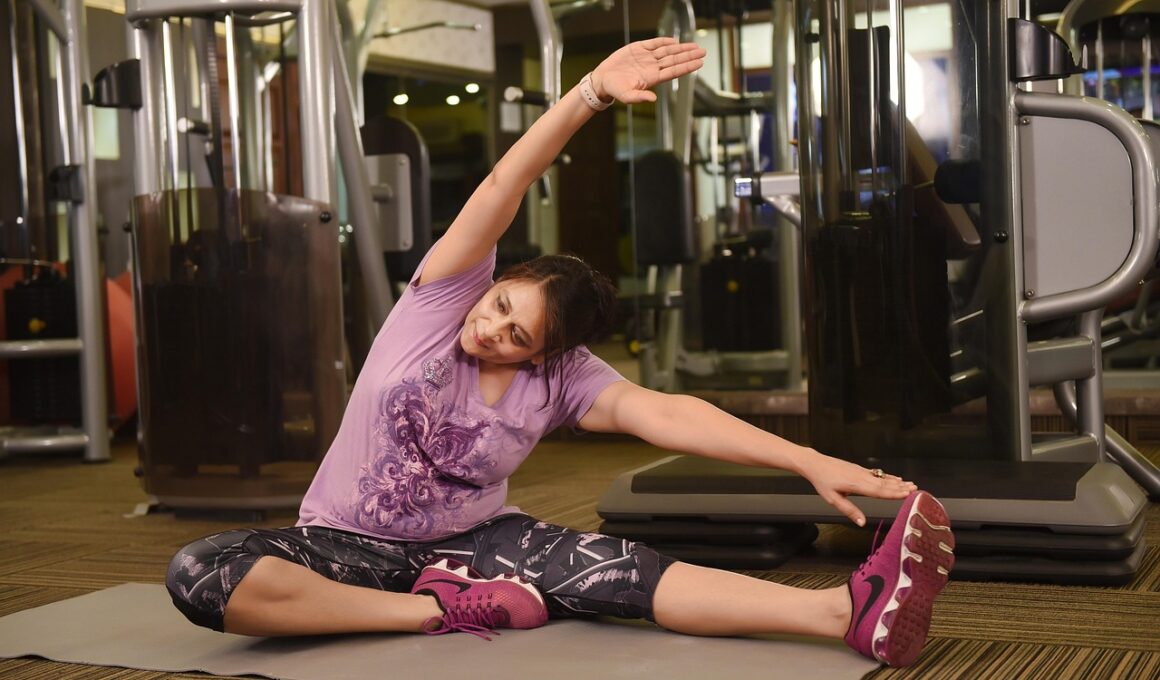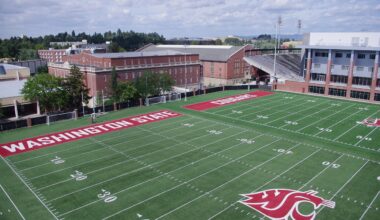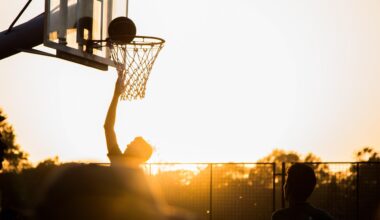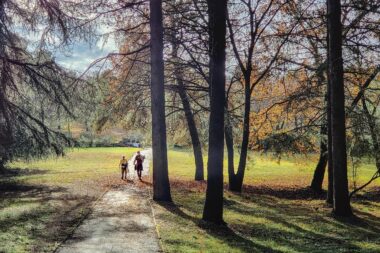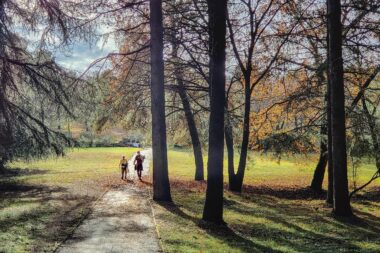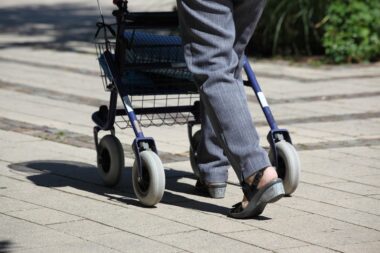Neural Mechanisms Underlying Motor Performance Decline and Exercise Benefits
The phenomenon of aging affects numerous aspects of the human body, especially regarding motor performance efficiency. As individuals age, physiological changes within neural pathways become prevalent, contributing significantly to declines in physical capabilities. The brain’s ability to adapt and coordinate motor tasks diminishes over time, resulting in slower reaction times and decreased muscle performance. These changes arise from alterations in brain structure and function, notably in regions involved in motor control, including the basal ganglia and cerebellum. Further, age-related loss of dopamine can impair motor function and overall coordination, leading to challenges in executing complex movements. Additionally, increased muscle stiffness and decreased range of motion accompany aging, further complicating the maintenance of optimal motor performance. The central nervous system and peripheral nervous system must work in harmony to ensure effective movement and coordination. Understanding the neurological aspects of aging can aid in developing targeted interventions, like exercise, to mitigate performance declines associated with aging. Active engagement through physical activities promotes neuroplasticity, enhancing cognitive functions and muscle performance while counteracting the deleterious effects of aging.
The Impact of Physical Exercise on Motor Skills
Engaging in regular physical exercise is a crucial factor in countering age-related declines in motor skills. Exercise promotes various physiological adaptations, such as enhanced blood flow to the brain and improved neuromuscular connections. Strength training, aerobic activities, and flexibility exercises contribute significantly to maintaining and improving motor performance in older adults. These various exercise modalities stimulate neurogenesis, leading to the formation of new neuronal connections and supporting overall cognitive function. Research indicates that individuals who remain physically active tend to exhibit excellent balance, coordination, and agility as they age. Consistent physical activity positively impacts muscle strength and endurance while contributing to better mental health by reducing anxiety and depression. Furthermore, group exercise settings foster social interaction, establishing supportive networks that enhance motivation and adherence to physical activity. In order to capitalize on the benefits of exercise, older adults should aim for a well-rounded fitness regimen that includes strength, balance, and flexibility training. Prioritizing a consistent exercise routine can preserve cognitive function and motor skills, supporting enhanced quality of life with aging.
Research has demonstrated that the long-term implementation of exercise regimens leads to noticeable improvements in both cognitive and motor performance. Specific types of exercise, such as resistance and endurance training, have shown to produce distinct benefits for various aspects of motor function. For instance, resistance training has been linked to enhanced neuromuscular coordination, allowing older adults to maintain their functional independence as they grow older. Meanwhile, aerobic exercises, particularly those involving rhythmic movement, stimulate cognitive functions integral to motor performance, such as attention and processing speed. Prioritizing varied activities ensures both physical and mental engagement, further aiding in the preservation of motor functions. Moreover, regular participation in exercise can reduce the risk of falls, providing a significant safety benefit to older adults. By empowering the brain and body through routine movement, individuals can experience improvements in reaction time, strength, and overall well-being. Catering exercise choices to an individual’s abilities and preferences is crucial to enhancing adherence and enjoyment. Consequently, adopting a lifestyle that integrates regular exercise not only benefits physical performance but also contributes to longevity and disease prevention.
The Role of Brain-Derived Neurotrophic Factor
Brain-derived neurotrophic factor (BDNF) is a protein involved in neuronal growth and survival and plays a vital role in neuroplasticity. Observations show that exercise significantly increases BDNF levels, supporting learning, memory, and motor performance. As older adults engage in physical activity, increased BDNF enhances synaptic plasticity, allowing for more efficient communication between neurons. This is particularly crucial as cognitive decline and loss of motor skill proficiency can be linked to reduced BDNF expression. Neurotrophic factors like BDNF are essential for maintaining healthy neural circuits, ensuring effective motor coordination. Moreover, elevated BDNF levels are associated with improved mood and cognitive functioning, further illustrating the association between physical activity and brain health. Promoting exercises that lead to increased BDNF synthesis can help minimize age-related decline in motor performance. Engaging in regular exercise facilitates increased BDNF release, thus fortifying the brain against neurodegenerative conditions and enhancing overall motor function. Individuals can harness the benefits of BDNF by incorporating diverse activities, including aerobic exercises, strength training, and non-impact alternatives like yoga or tai chi, which promote movement without excessive strain.
Changes in neural mechanisms due to aging can be counterbalanced by beneficial effects imparted through regular exercise. Older adults often experience a reduced volume of gray matter, which is essential for processing information and executing motor tasks effectively. However, engaging in routine physical activity can mitigate these declines and stimulate the production of new neurons. This neurogenesis is crucial for maintaining cognitive function and promoting improved motor skills in aging populations. Aerobic exercise, in particular, has been associated with increased brain volume and improved function across multiple domains. Activities that require focus and coordination challenge the brain while reinforcing motor pathways, supporting both cognitive and physical performance. Additionally, exercise is known to influence neurotransmitter systems, alleviating some of the cognitive deficits experienced in aged individuals. Understanding how exercise positively influences the aging brain underscores its significance not only for physical health but for comprehensive mental well-being. Utilizing environments that encourage movement and social interaction can dramatically enhance the quality of life as one ages, offering clear advantages to those willing to prioritize their active living. As neuroplasticity diminishes, exercise emerges as a crucial factor in supporting aging populations.
Future Directions for Research and Interventions
Future research will need to explore effective strategies for employing exercise as a primary intervention tailored explicitly for aging populations. Identifying specific exercise types and intensities that yield the most significant benefits for motor performance and cognitive resilience is critical. Continued investigations into the neurobiological mechanisms underlying the relationship between exercise and brain function will reveal pathways to enhance public health initiatives. Implementing community-based exercise programs designed to cater to the unique needs of older adults can amplify long-term engagement and positive outcomes. These programs should emphasize social connections, reducing isolation, and enhancing motivation through group activities. Furthermore, technology integration can play a vital role in facilitating personalized exercise regimens tailored to individual capabilities, promoting adherence and motivation. Collaborative efforts with healthcare professionals, providing education regarding the benefits of exercise, can empower older adults and their caregivers. By bridging the gap between research findings and practical applications, the goal of improving health outcomes for older individuals can be achieved. Prioritizing exercise as a lifestyle choice paves the way for healthier aging, allowing individuals to maintain their independence and quality of life for years to come.
Promoting exercise benefits is imperative for sustaining health as individuals age. The neural mechanisms influencing motor performance and cognition are intricately connected to lifestyle choices like exercise. Awareness of the profound effects exercise has on muscle strength, coordination, and mental acuity needs to be disseminated among older populations. Health practitioners should aim to motivate older adults to engage in a consistent exercise routine, addressing any perceived barriers to participation. Identifying enjoyable activities may encourage compliance and joy in movement, creating a favorable atmosphere for exploring various modes of exercise. Additionally, recognizing the significant role of community support can foster an environment conducive to activity and connection. Individuals should be encouraged to explore local resources for exercise groups or classes focused on older adult engagement. Establishing supportive networks can foster camaraderie and motivation, enhancing the overall experience of participation. As exercise promotes resilience against cognitive decline and motor impairment, integrating physical activity into daily routines is critical. By fostering a culture that values active living among older adults, society can facilitate enriched lives characterized by well-being and independence.
In conclusion, understanding the complex relationship between aging and motor performance reveals the essential role exercise plays in maintaining health. The engagement in regular physical activity presents a powerful mechanism to counteract declines associated with aging. Neural mechanisms underlying motor performance, including neurogenesis and the influence of BDNF, highlight the benefits of a well-rounded exercise regimen. As individuals age, prioritizing movement can provide remarkable health benefits, enhancing not only physical abilities but also cognitive function and overall quality of life. Future directions for research must emphasize personalized exercise recommendations and community-based interventions tailored to older populations. Through these efforts, individuals can be empowered to embrace active lifestyles, reducing the risk of dependency and enhancing longevity. Additionally, continued promotion of the health advantages of exercise across various platforms, such as healthcare systems and community organizations, is vital for widespread awareness among aging individuals. By adopting a holistic approach to health within aging populations, society can cultivate an environment that encourages active living, thereby maximizing the potential of individuals as they navigate through the later stages of their lives.
